NCERT Solution (Part - 2) - Bills of Exchange | Accountancy Class 11 - Commerce PDF Download
Q2 : On Jan 01,2016, Shankar purchased goods from Parvati for Rs 8,000 and immediately drew a promissory note in favour of Parvati payable after 3 months. On the date of maturity of the promissory note, the Government of India declared holiday under the Negotiable Instrument Act 1881. Since, Parvati was unaware about the provision of the law regarding the date of maturity of the bill, she handed over the bill to her lawyer, who duly presented the bill and received the payment. The amount of the bill was handed over by the lawyer to Parvati immediately. Record the necessary Journal entries in the books of Parvati and Shankar.
Answer :
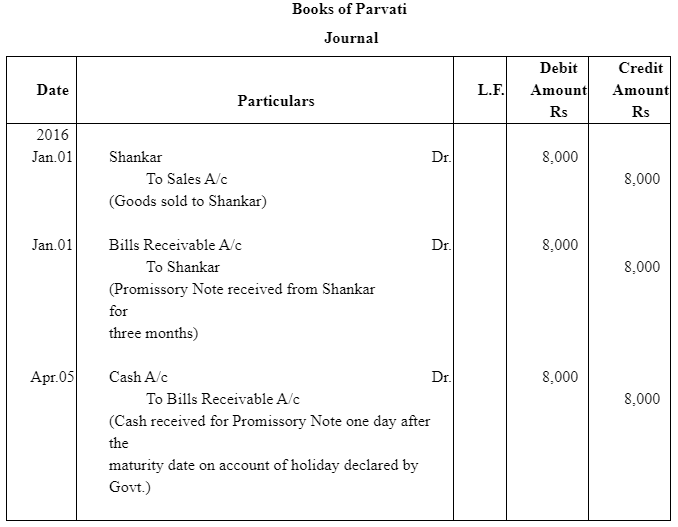
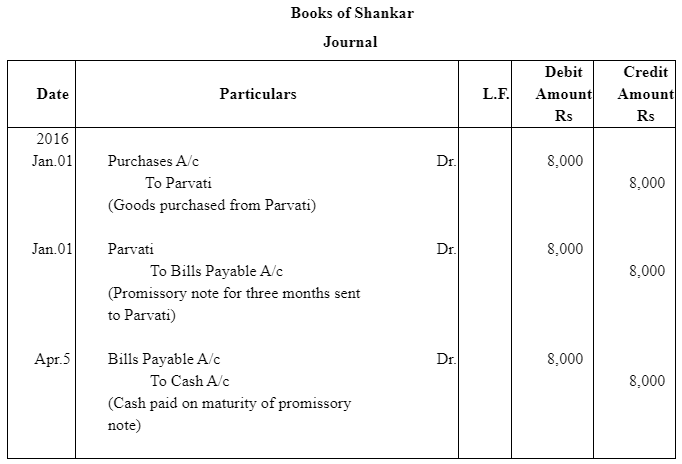
Note: Here, it has been assumed holiday on Apr.04, 2016 is emergency holiday if it had gazetted holiday, the Promissory Note should have been discharged on Apr.05, 2011.
Q3 : Vishal sold goods for Rs 7,000 to Manju on Jan 05, 2066 and drew upon her a bill of exchange payable after 2 months. Manju accepted Vishal's draft and handed over the same to Vishal after acceptance. Vishal immediately discounted the bill with his bank@12% p.a. On the due date Manju met her acceptance. Journalise the above transactions in the books of Vishal and Manju.
Answer : 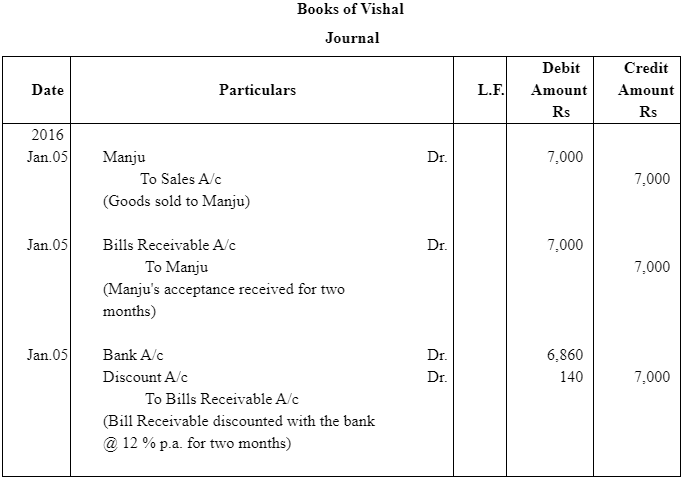
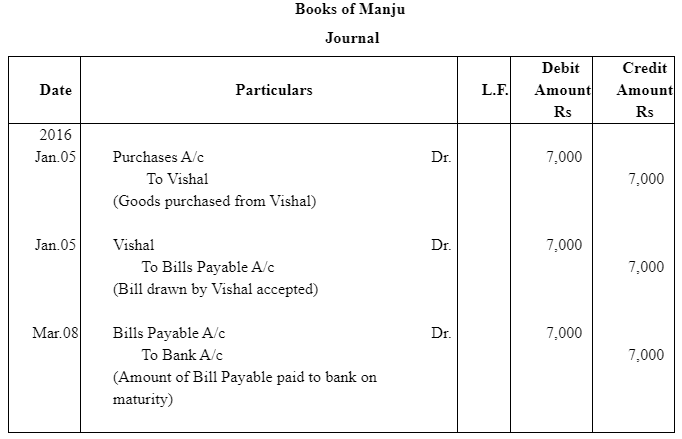
Q4 : On Feb 01, 2016, John purchased goods for Rs 15,000 from Jimmi. He immediately made a payment of Rs 5,000 by cheque and for the balance accepted the bill of exchange drawn upon him by Jimmi. The bill of exchange was payable after 40 days. Five days before the maturity of the bill, Jimmi sent the same to his bank for collection. The bank duly presented the bill to John on the due date who met the bill. The bank informed the same to Jimmi. Prepare John’s account in the books of Jimmi and Jimmi account in the books of John.
Answer :
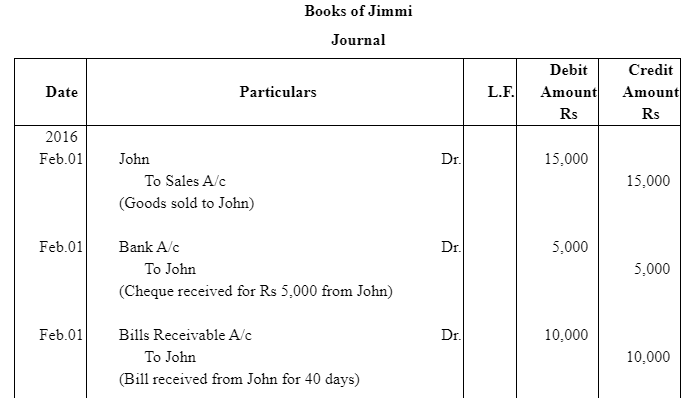
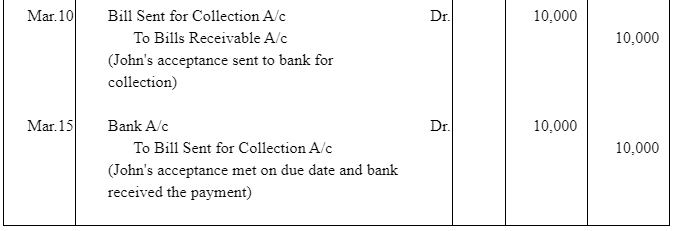
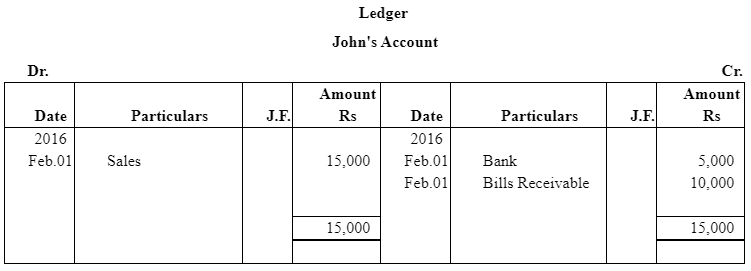
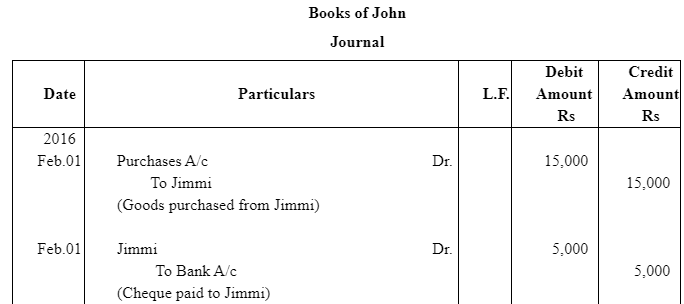


Page No 334:
Q5 : On Jan 15, 2015, Kartar Sold goods for Rs 30,000 to Bhagwan and drew upon him three bills of exchanges of Rs 10,000 each payable after one month, two month, and three months respectively. The first bill was retained by Kartar till its maturity. The second bill was endorsed by him in favour of his creditor Ratna and the third bill was discounted by him immediately @ 6% p.a. All the bills were met by Bhagwan. Journalise the above transactions in the books of Kartar and Bhagwan. Also prepare ledger accounts in books of Kartar and Bhagwan.
Answer:
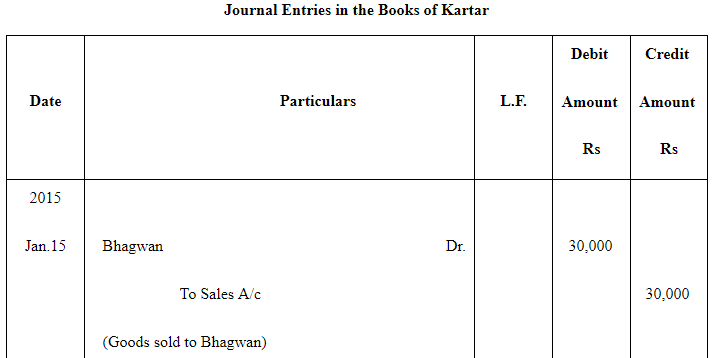
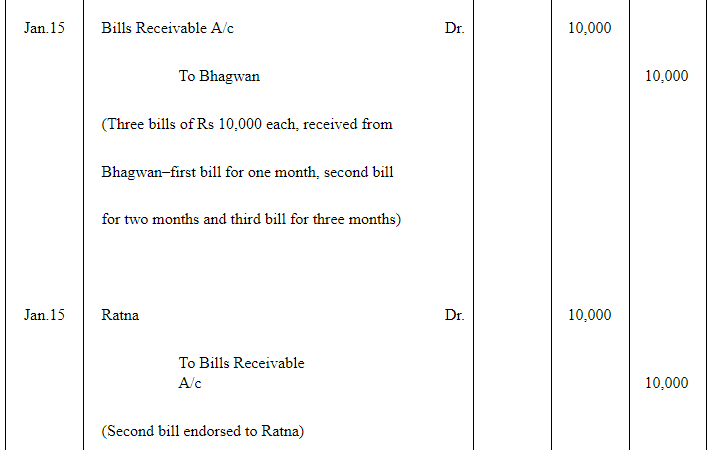
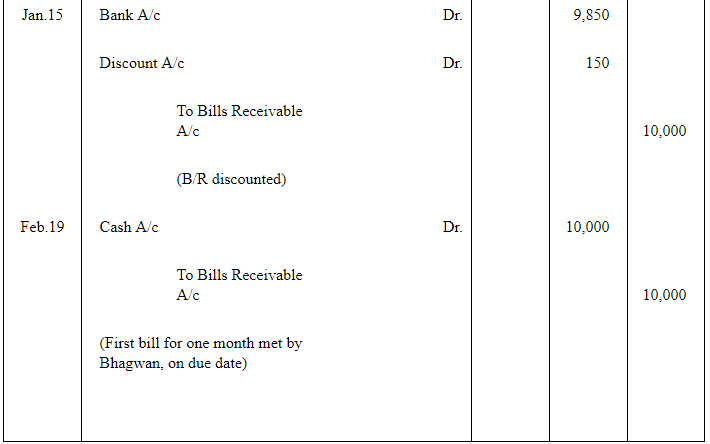
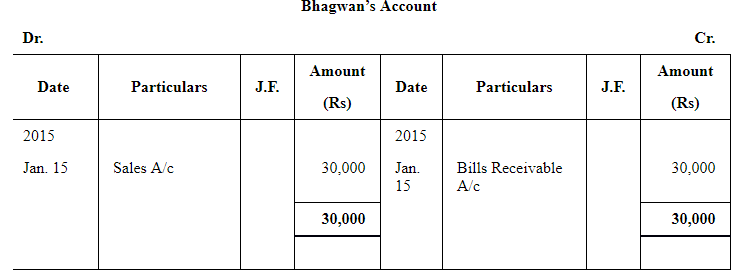
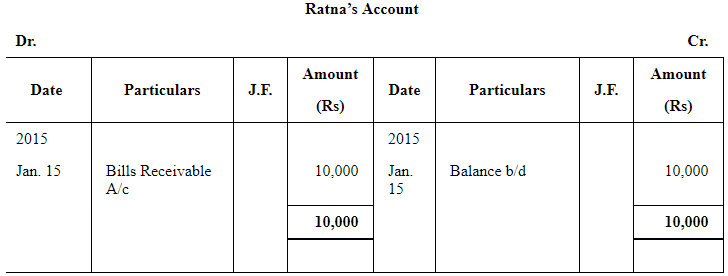
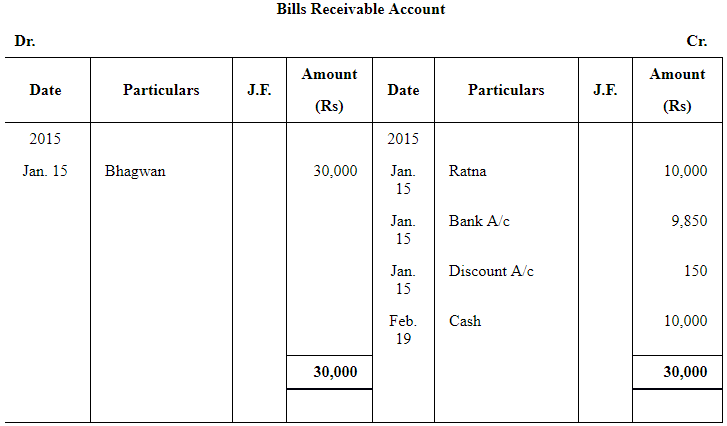
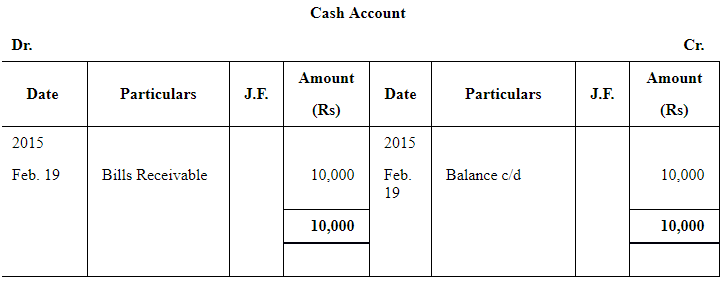
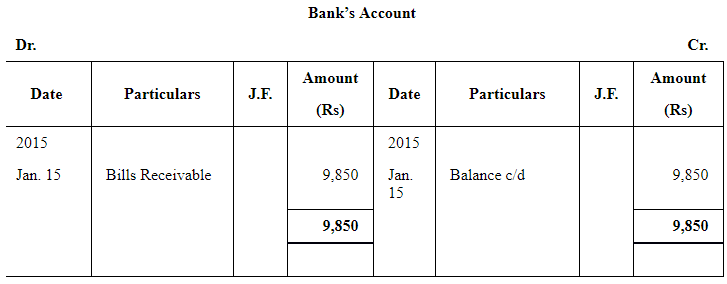
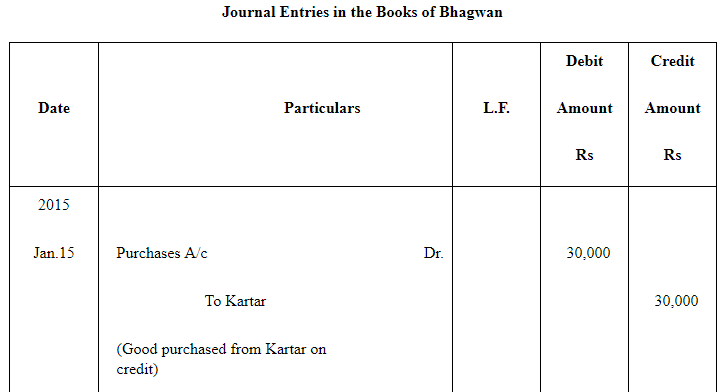
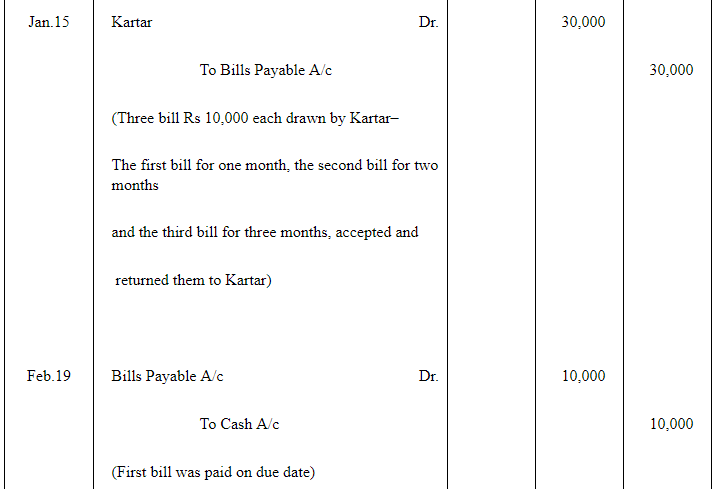
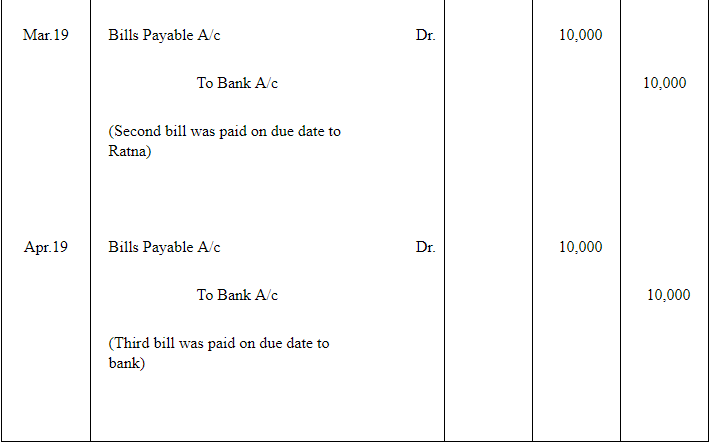
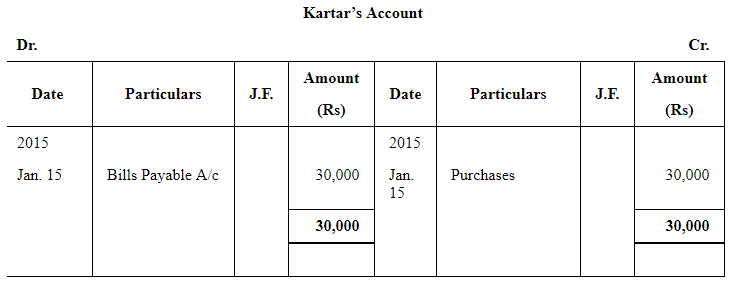
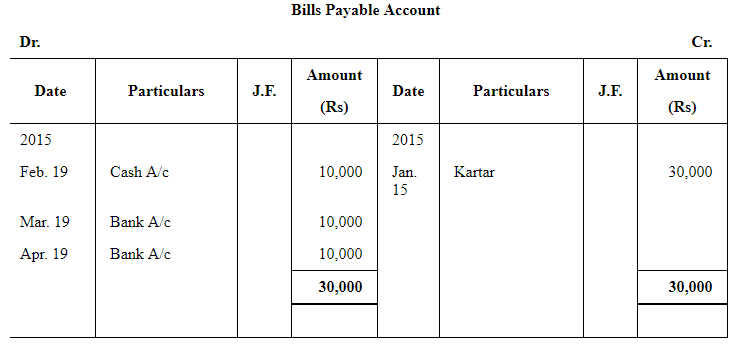
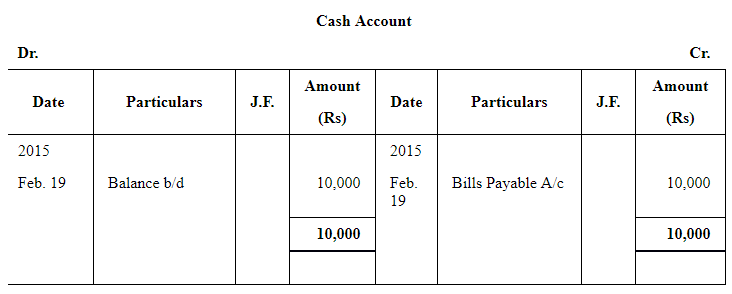
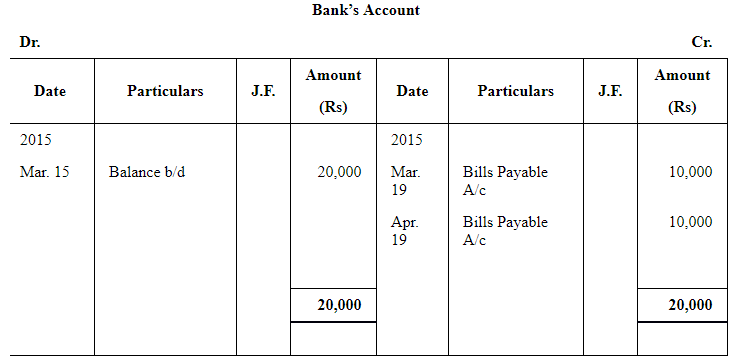
Q6 : On Jan. 01, 2016 Arun sold goods for Rs 30,000 to Sunil. 50% of the payment was made immediately by Sunil on which Arun allowed a cash discount of 2%. For the balance Sunil drew a promissory note in favour of Arun payable after 20 days. Since, the date of maturity of bill was a public holiday, Arun presented the bill on a day, as per the provisions of Negotiable Instrument Act which was met by Sunil. State the date on which the bill was presented by Arun for payment and Journalise the above transactions in the books of Arun and Sunil.
Answer :
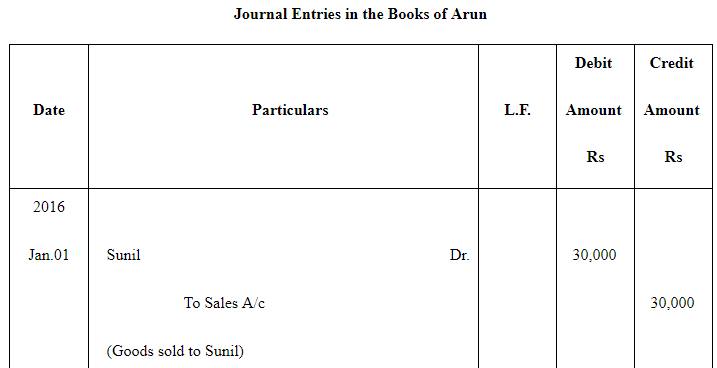

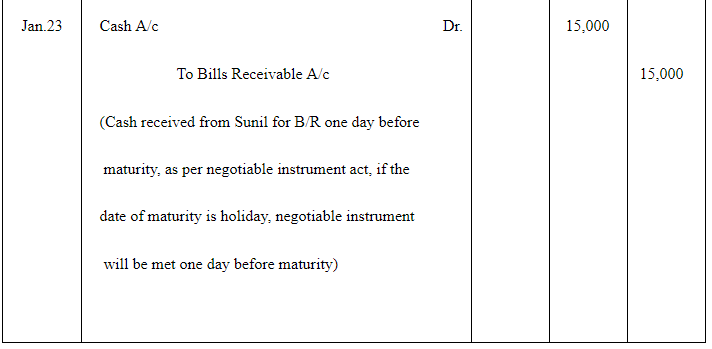
Note: Date of maturity of the promissory note is Jan. 24, 2016, on account of holiday, it will be presented one day earlier that is on Jan. 23, 2016.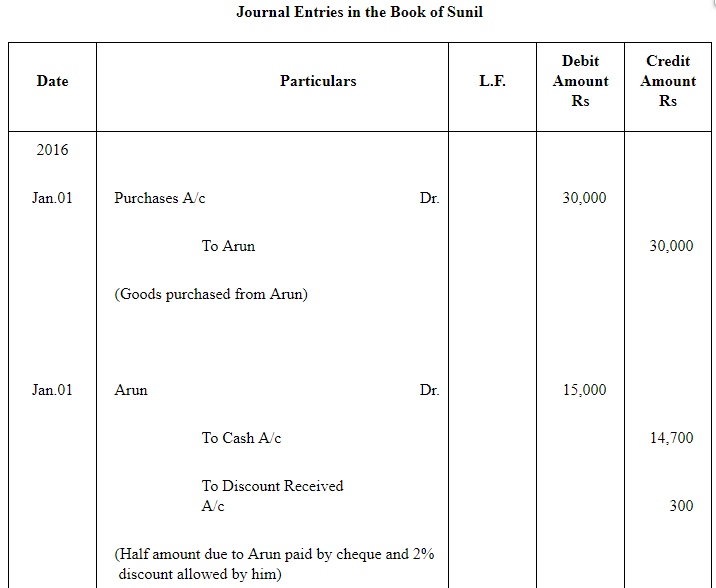
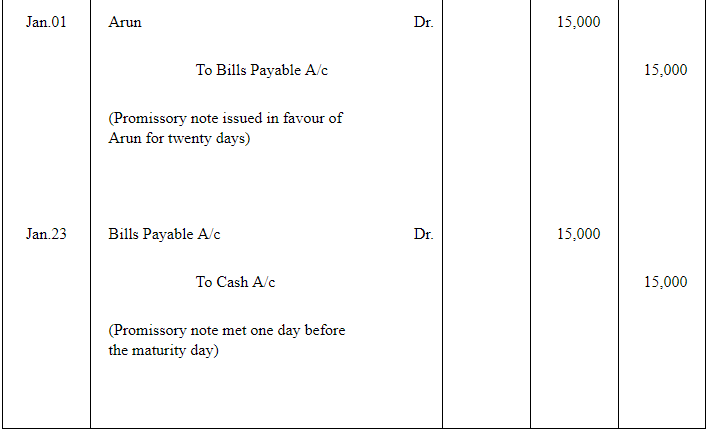
Q7 : Darshan sold goods for Rs 40,000 to Varun on 8.1.2016 and drew upon him a bill of exchange payable after two months. Varun accepted the bill and returned the same to Darshan. On the due date the bill was met by Varun. Record the necessary Journal entries in the books of Darshan and Varun in the following circumstances.
- When the bill was retained by Darshan till the date of its maturity.
- When Darshan immediately discounted the bill @ 6% p.a. with his bank.
- When the bill was endorsed immediately by Darshan in favour of his creditor Suresh.
- When three days before its maturity, the bill was sent by Darshan to his bank for collection.
Answer : Case (i): When the bill was retained by Darshan till the date of its maturity
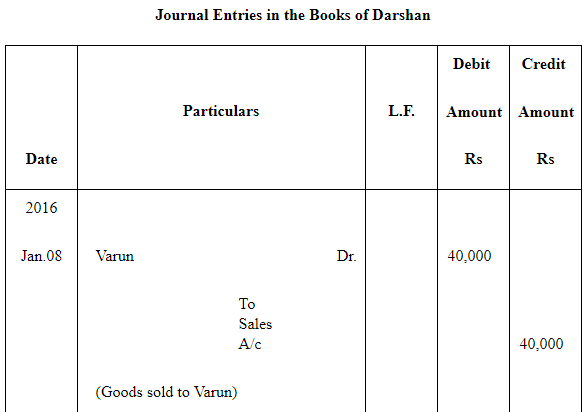

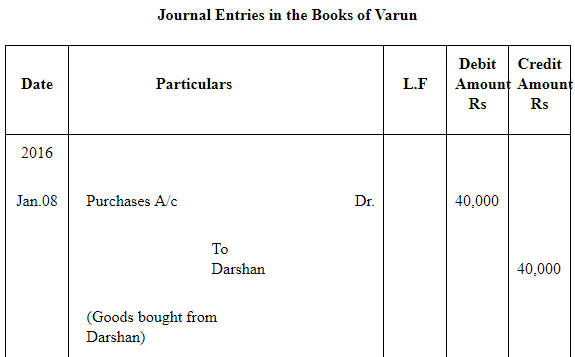

Case (ii): When Darshan immediately discounted the bill @ 6% p.a. with the bank.


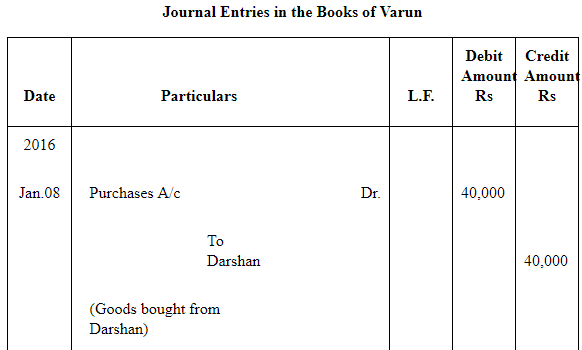
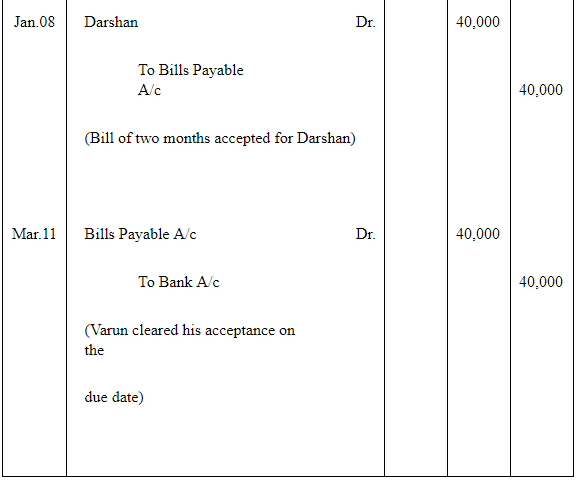
Case (iii): When the bill was endorsed immediately by Darshan in favour of his creditor Suresh.
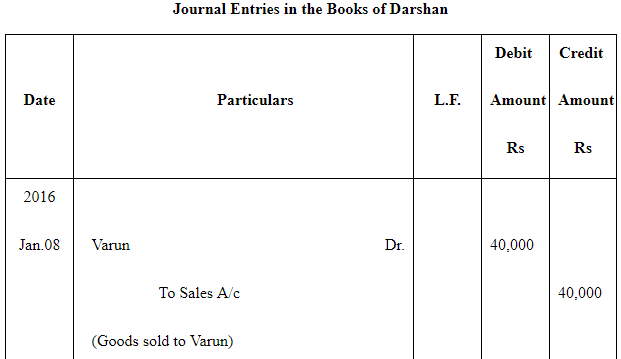

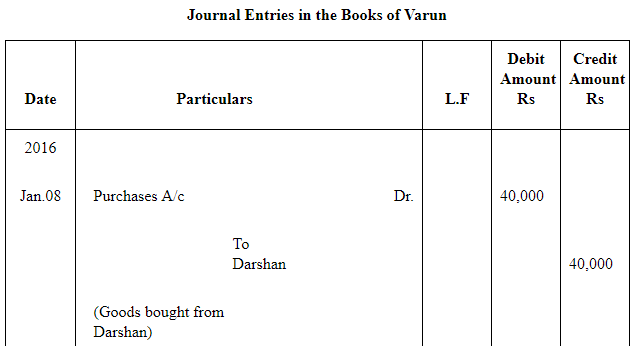
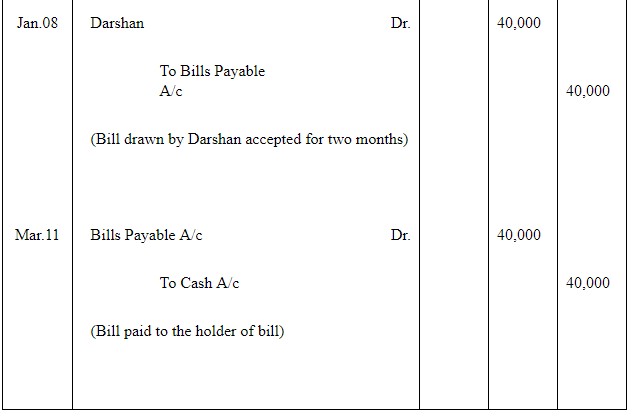
Case (iv): When three days before its maturity, the bill, as sent by Darshan to his bank for Collection.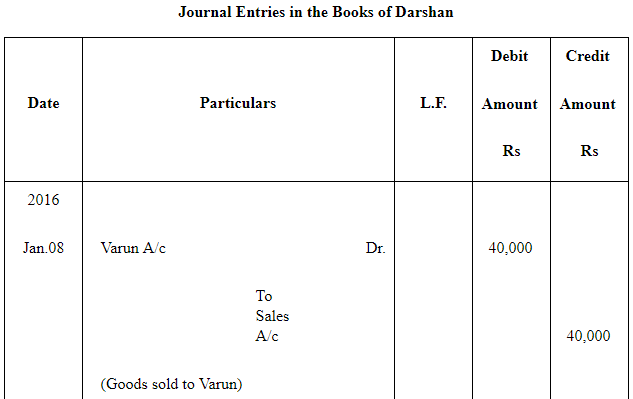
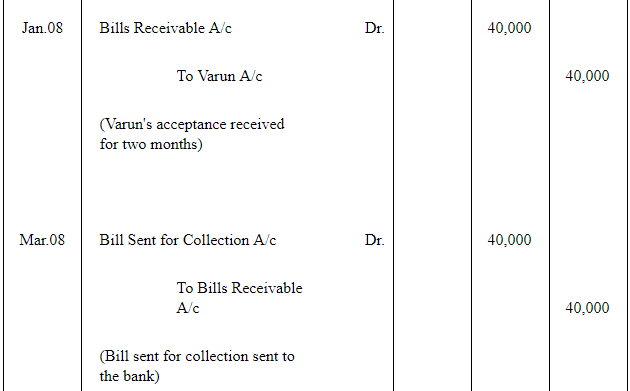
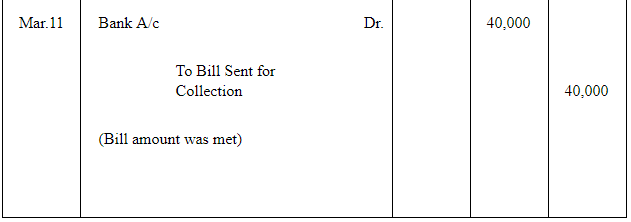
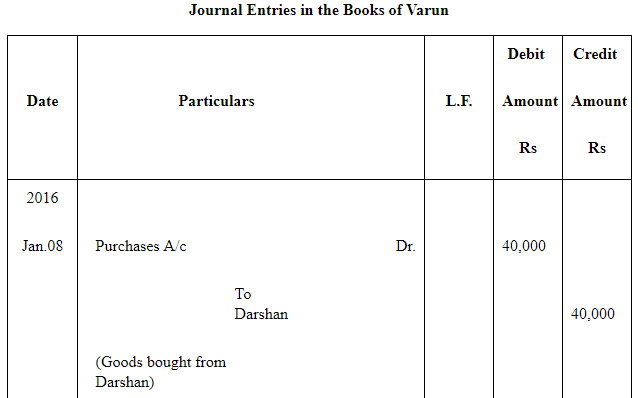

Q8 : Bansal Traders allow a trade discount of 10% on the list price of the goods purchased from them. Mohan traders, who runs a retail shop made the following purchases from Bansal Traders
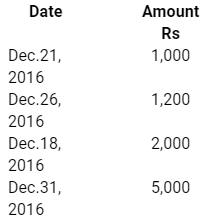
For all the purchases Mohan Traders drew promissory note in favour of Bansal Traders payable after 30 days. The promissory note for the sale of Dec. 21, 2016 was retained by Bansal Traders with them till the date of its maturity. The promissory note drawn on 26.12.2016 was discounted by Bansal Traders from their bank at 12% p.a. The promissory note drawn on Dec. 28, 2016 was endorsed by Bansal Traders in favour of their creditor Dream Soaps in full settlement of a purchase amounting to Rs 1,900. On 25.1.2017 Bansal Traders sent the promissory note drawn on Dec. 31, 2016 to their bank for collection. All the promissory notes were met by Mohan Trade Rs Record the necessary journal entries for the above transactions in the books of Bansal Traders and Mohan Traders and prepare Mohan Traders account in the books of Bansal Traders and Bansal Traders account in the books of Mohan Trade Rs
Answer :
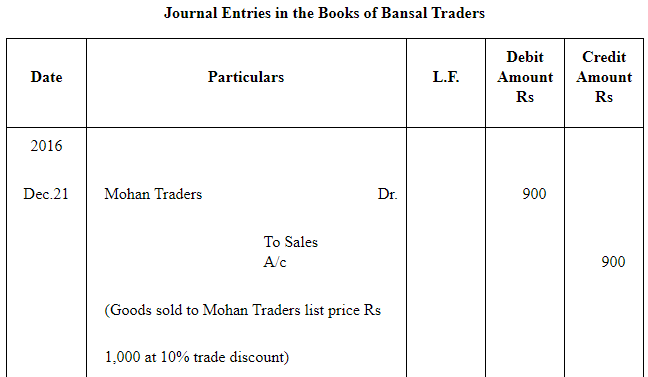
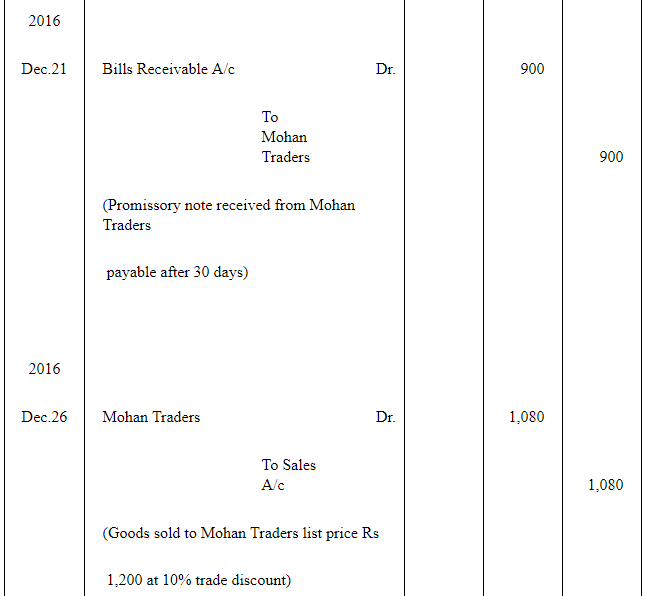
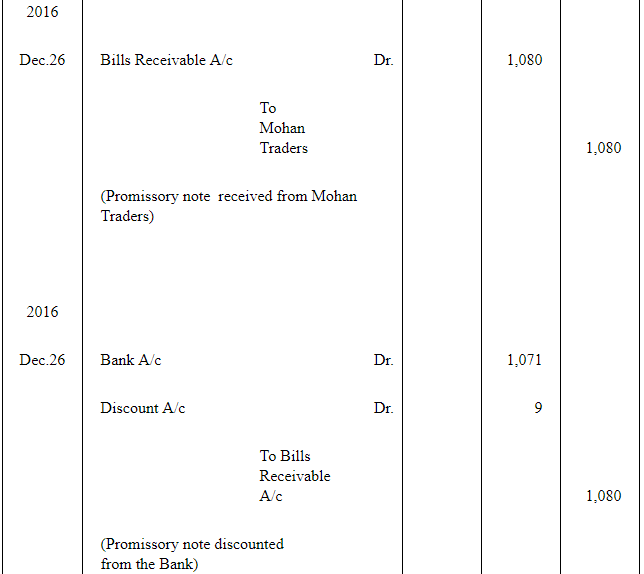
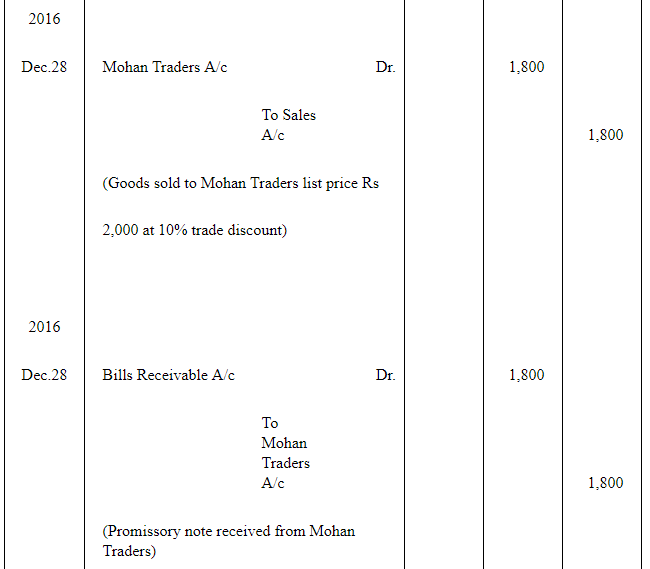
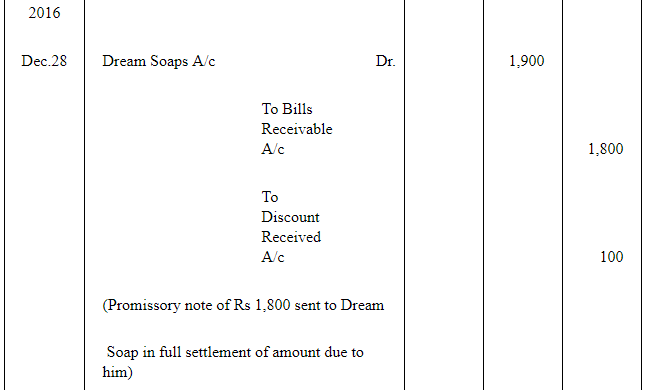
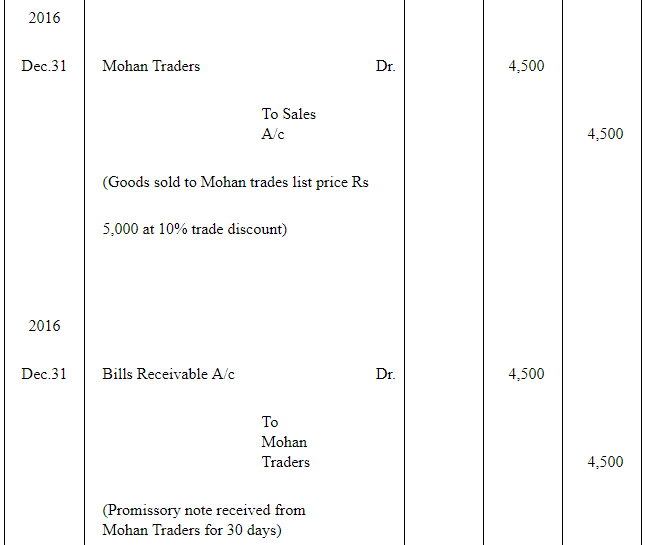

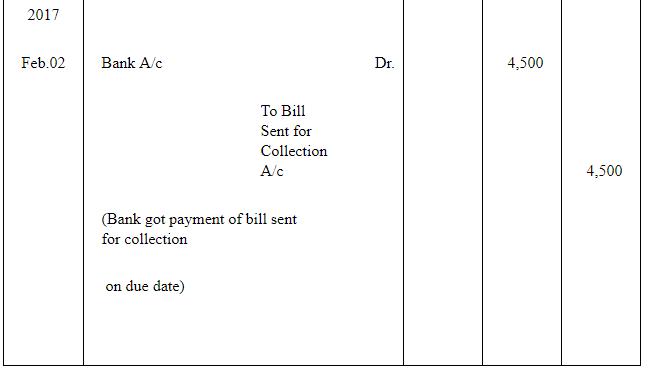
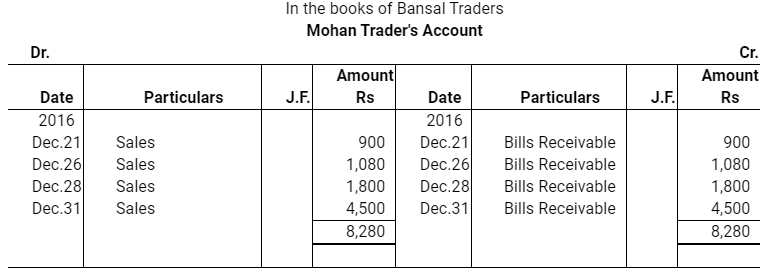
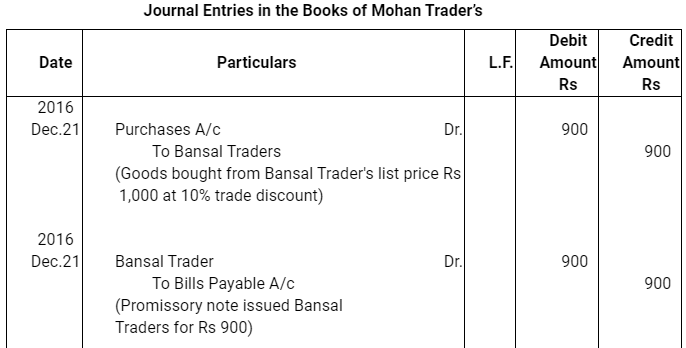
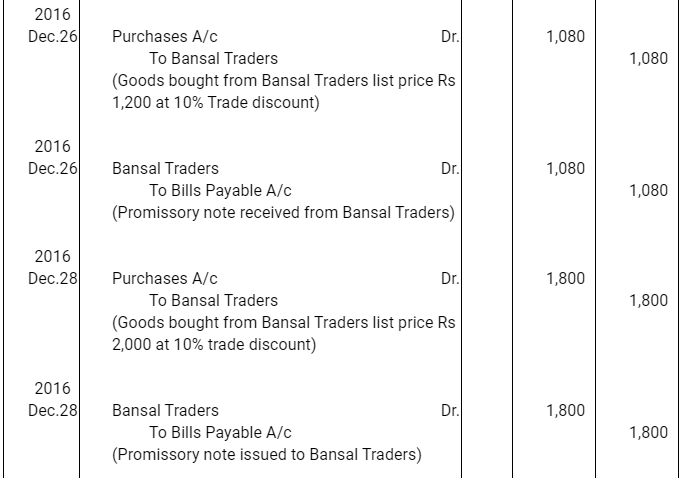
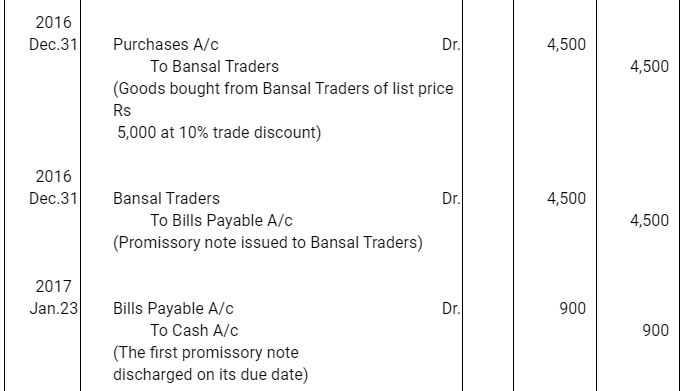
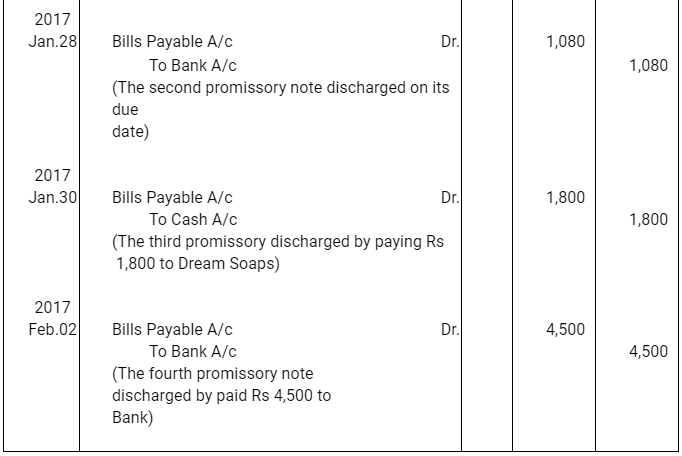
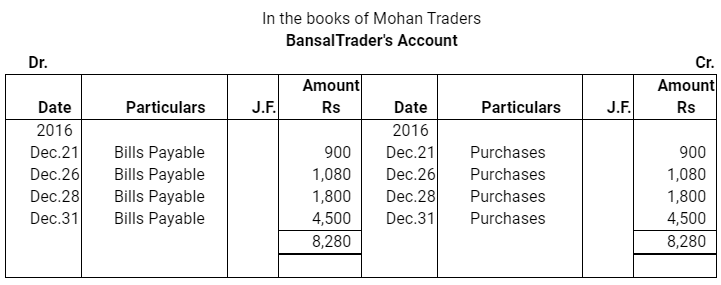
Q9 : Narayanan purchased goods for Rs 25,000 from Ravinderan on Feb. 01, 2016. Ravinderan drew upon Narayanan a bill of exchange for the same amount payable after 30 days. On the due date Narayanan dishonoured his acceptance. Pass the necessary journal entries in the books of Ravinderan and Narayanan in following cases:
- When the bill was retained by Ravinderan with him till the date of its maturity.
- When the bill was discounted by Ravinderan immediately with his bank @ 6% Case (i) :
- When the bill was retained by Ravinderan with him till the date of its maturity p.a.
- When the bill was endorsed to his creditor Ganeshan.
- When the bill was sent by Ravinderan to his bank for collection a few day before it maturity.
Answer :
Case (i) : When the bill was retained by Ravinderan with him till the date of its maturity
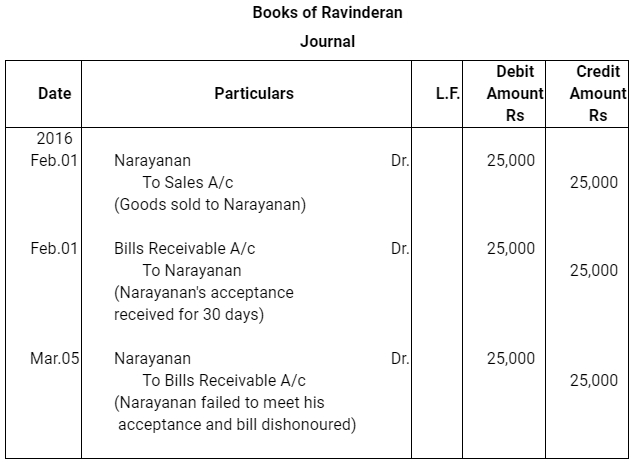
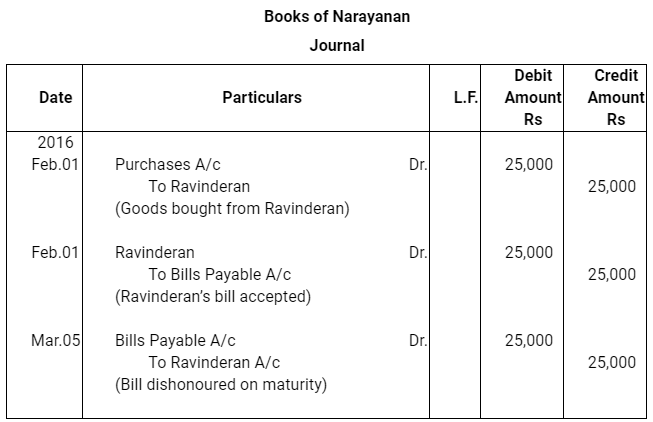
Case (ii) : When the bill was discounted by Ravinderan immediately with his bank @ 6% p.a.
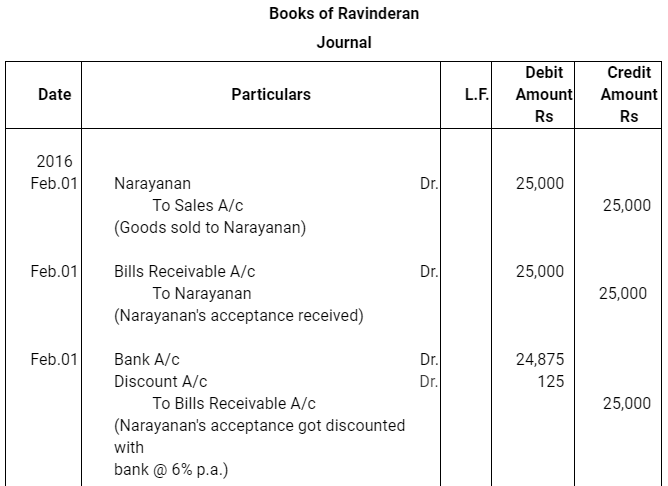

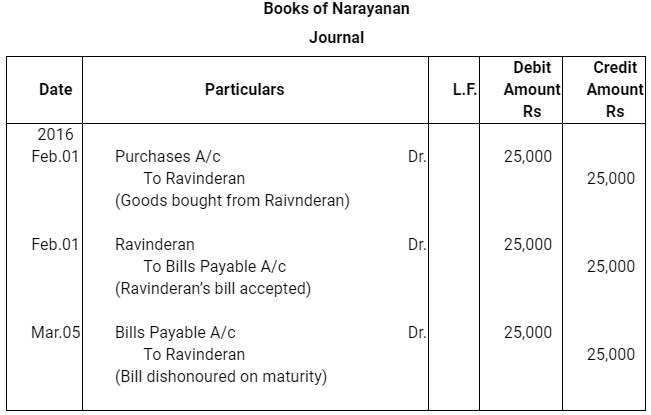
Case (iii) : When the bill was endorsed to his creditor Ganeshan



Case (iv) : When the bill was sent by Ravinderan to his bank for collection a few days before it maturity
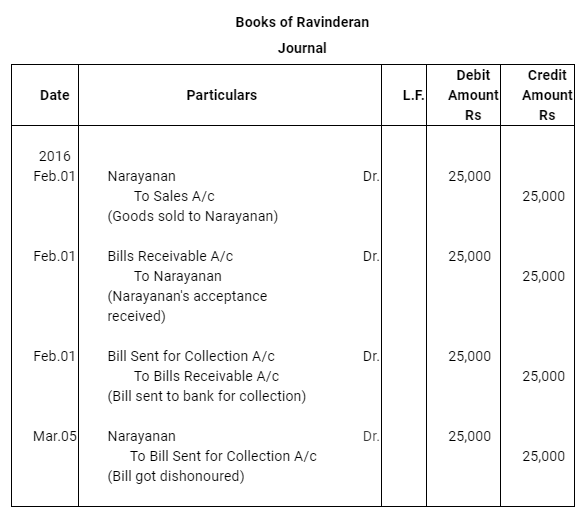
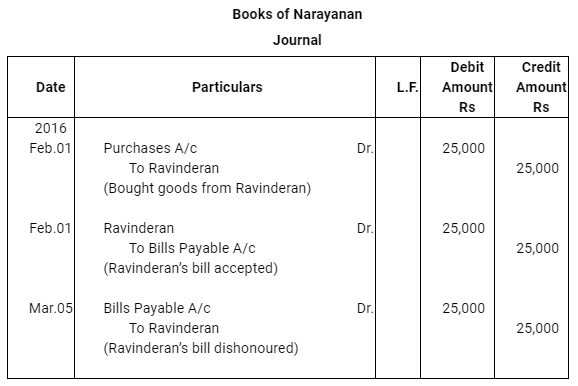
|
64 videos|152 docs|35 tests
|
FAQs on NCERT Solution (Part - 2) - Bills of Exchange - Accountancy Class 11 - Commerce
| 1. What is a bill of exchange? |  |
| 2. What are the parties involved in a bill of exchange? |  |
| 3. What are the essential features of a bill of exchange? |  |
| 4. What is the difference between a bill of exchange and a promissory note? |  |
| 5. How does discounting of a bill of exchange work? |  |

|
Explore Courses for Commerce exam
|

|


















